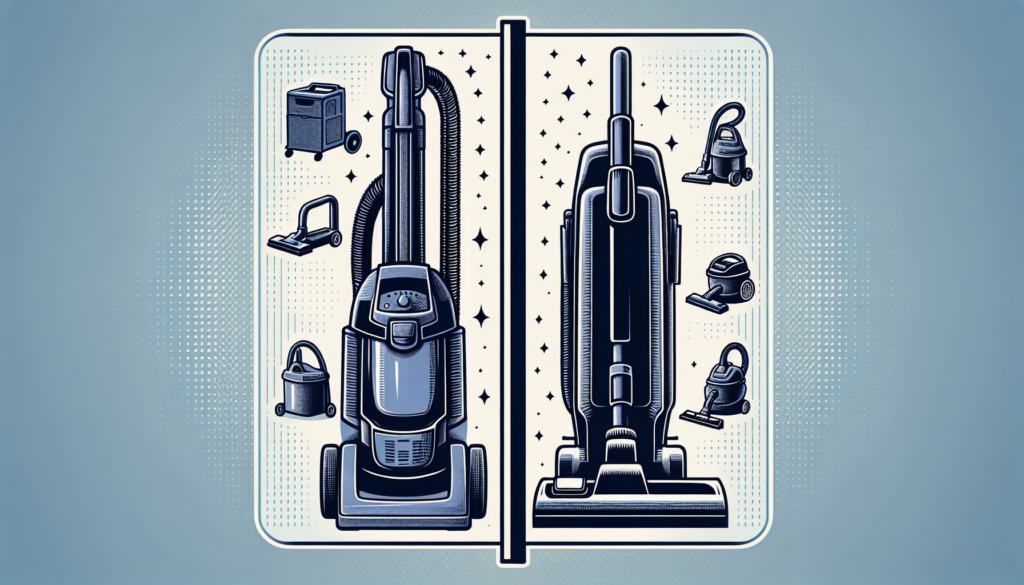Are you a vintage furniture enthusiast or someone looking to add a touch of character to your home decor? Look no further, as we present to you “The Art Of Buying Vintage Furniture: Expert Advice.” Get ready to embark on a journey that will guide you through the intricate world of vintage furniture buying. With our expert advice, you will gain the knowledge and confidence to make informed decisions and find the perfect pieces that reflect your unique style and personality. Say goodbye to mainstream and hello to one-of-a-kind treasures that will transform your living space into a true work of art. So, let’s dive in and discover the secrets of navigating the world of vintage furniture like a pro!

Things to Consider Before Buying Vintage Furniture
Vintage furniture can add a unique and timeless touch to your home decor. Before you make a purchase, there are a few important things to consider to ensure you are buying the right piece for your needs. By doing thorough research, determining your budget, assessing the condition, and considering functionality and practicality, you can make an informed decision and find the perfect vintage furniture for your space.
Researching and Identifying Authenticity
When buying vintage furniture, it’s crucial to research and identify its authenticity. This will help you determine the true value of the piece and ensure you are not purchasing a reproduction or fake item. Look for identifying marks or labels, such as makers’ stamps or signatures, which can provide clues about the furniture’s origin and age. Additionally, studying the construction techniques, materials used, and design elements specific to different time periods can help you authenticate the furniture you are interested in.
Determining Your Budget
Before diving into the world of vintage furniture, it’s essential to determine your budget. Vintage pieces can vary widely in price, depending on factors such as age, condition, rarity, and designer. It’s important to set a realistic budget so that you don’t overspend or compromise on quality. Consider what you can comfortably afford and weigh that against the value and significance of the piece you desire. Keep in mind that vintage furniture is an investment, and finding the right balance between quality and price is key.
Assessing the Condition
Vintage furniture has usually stood the test of time, but it’s essential to assess its condition before making a purchase. Look for any signs of damage, such as cracks, chips, or water stains, and determine if they are easily repairable. Consider whether the piece will require significant restoration or refurbishment, and factor in the cost and time involved. If you are buying online or from a distance, make sure to ask for detailed photographs and inquire about any known issues or repairs. Taking the time to carefully assess the condition will help you make an informed decision and avoid any unpleasant surprises.
Considering Functionality and Practicality
While the aesthetics of vintage furniture are often a major draw, it’s important to consider its functionality and practicality for your specific needs. Vintage pieces may have unique features or limitations that need to be taken into account. Ask yourself if the furniture will serve its intended purpose and fit well within your existing space. Consider factors such as size, storage capabilities, and compatibility with your lifestyle. By considering functionality and practicality, you can ensure that the vintage piece you choose not only looks great but also meets your everyday needs.
Where to Find Vintage Furniture
Once you’ve considered these important factors, it’s time to start the search for vintage furniture. There are various places where you can find authentic and unique pieces that suit your style and budget.
Antique Stores
Antique stores are a classic and reliable source for vintage furniture. These specialized shops often have a wide selection of pieces from various time periods, carefully curated by knowledgeable sellers. Antique stores offer a more curated and controlled shopping experience, allowing you to browse and discover unique treasures in a dedicated environment. Sellers in antique stores can provide valuable insights and information about the history and authenticity of the furniture they sell.
Flea Markets and Garage Sales
If you’re looking for a more adventurous and hands-on shopping experience, flea markets and garage sales can be a treasure trove for vintage furniture. These informal and often lively events attract sellers looking to offload their pre-loved items, making it an excellent opportunity to find hidden gems at affordable prices. While it may require more time and effort to sift through the offerings, the thrill of stumbling upon a rare find is worth it for many vintage furniture enthusiasts.
Online Marketplaces
The internet has revolutionized the way we shop, and the world of vintage furniture is no exception. Online marketplaces such as BuySellCloud.com offer a vast selection of vintage furniture from all over the world, accessible right at your fingertips. With detailed descriptions, photographs, and seller reviews, you can conveniently browse and compare different pieces. When shopping online, it is crucial to carefully read item descriptions, ask sellers questions, and request additional photos to ensure the authenticity and condition of the furniture.
Estate Sales and Auctions
Estate sales and auctions provide opportunities to acquire vintage furniture from the estates of collectors, enthusiasts, or individuals downsizing their homes. These events often feature a wide range of furniture pieces, including valuable antiques and unique vintage finds. While estate sales may offer more competitive pricing, auctions can be a thrilling experience, allowing you to bid for the items you desire. It’s important to arrive early and be prepared with a budget in mind to maximize your chances of finding the perfect vintage piece.

How to Spot Quality Vintage Furniture
When searching for vintage furniture, it’s essential to know how to spot quality pieces among the many options available. By paying attention to the materials and construction, examining the furniture’s finish, checking for signs of damage or repairs, and evaluating the overall design and style, you can identify well-crafted and durable vintage furniture.
Inspecting the Materials and Construction
The quality and durability of vintage furniture often depend on the materials used and the construction techniques employed. Examine the furniture’s frame and joints to ensure they are sturdy and well-made. Look for solid wood or high-quality veneers and avoid furniture made from particleboard or low-grade materials. Assess the level of craftsmanship by inspecting the joinery, such as dovetail or mortise-and-tenon joints, which indicates skilled construction.
Examining the Furniture’s Finish
The finish of vintage furniture is not just about aesthetics but also a clue to its quality and authenticity. Look for well-applied finishes that have stood the test of time. High-quality pieces often feature hand-applied finishes, such as shellac or varnish, which create a rich and durable surface. Examine the surface for signs of wear, including scratches or fading, as this can indicate the age and authenticity of the piece. If the finish has been altered, it may impact the value and overall integrity of the furniture.
Checking for Signs of Damage or Repairs
While vintage furniture may have minor imperfections due to its age, it’s important to distinguish between wear and tear and significant damage. Look for any structural issues, such as loose joints or wobbly legs, as these can affect the functionality and lifespan of the piece. Assess any signs of repair or restoration, and consider whether they have been done professionally and sympathetically to the original design. Remember that minor repairs can be acceptable, but extensive damage or poor-quality repairs may diminish the value and usability of the furniture.
Evaluating the Overall Design and Style
The design and style of vintage furniture are key factors in its appeal and value. Consider the overall aesthetics and how well the piece fits within your desired decor style. Look for timeless designs that have stood the test of time and can seamlessly blend with both vintage and contemporary elements. Evaluate the attention to detail and unique design features that set the furniture apart. By selecting a piece that resonates with you stylistically, you can enjoy the beauty and character of vintage furniture in your space.
Understanding Different Types of Vintage Furniture
Vintage furniture encompasses a wide range of styles and time periods, each with its own unique characteristics and appeal. Understanding different types of vintage furniture can help you narrow down your search and find the perfect piece that matches your personal style and preferences. Here are a few popular styles to consider:
Mid-Century Modern
Mid-century modern furniture, popularized in the mid-20th century, is characterized by clean lines, organic shapes, and a minimalist aesthetic. Influenced by the Bauhaus movement, mid-century modern pieces often feature a combination of wood, metal, and plastic materials. This style is known for its functionality and simplicity, making it a versatile choice for various interior design styles.
Art Deco
Art Deco furniture originated in the 1920s and 1930s and is characterized by its glamorous and bold design. This style is characterized by geometric patterns, luxurious materials, and rich colors. Art Deco furniture often features exotic woods, such as rosewood or mahogany, and incorporates elements of modernism and industrial design.
Victorian
Victorian furniture dates back to the reign of Queen Victoria in the 19th century and is known for its ornate and decorative designs. This style emphasizes intricate carvings, dark woods, and luxurious upholstery. Victorian furniture often features elements such as cabriole legs, tufted upholstery, and floral motifs, reflecting the opulence and elegance of the era.
Industrial
Industrial furniture gained popularity in the 20th century and is inspired by the aesthetics of factories and warehouses. This style emphasizes raw materials, such as metal and reclaimed wood, and often embraces utilitarian design elements. Industrial furniture is characterized by a mix of textures, exposed hardware, and a minimalist yet rugged aesthetic.
By understanding the defining characteristics of different vintage furniture styles, you can narrow down your search and focus on the pieces that align with your personal taste and interior design vision.

Sourcing Vintage Furniture on a Budget
While vintage furniture can sometimes come with a higher price tag, there are ways to source unique pieces without breaking the bank. By joining online vintage furniture communities, building relationships with local sellers, attending furniture swaps and exchanges, and repurposing and upcycling existing pieces, you can find budget-friendly options and create a one-of-a-kind home decor.
Joining Online Vintage Furniture Communities
Online vintage furniture communities and forums provide a platform for buyers and sellers to connect, share information, and offer their pre-loved pieces. By joining these communities, you can gain access to exclusive deals, insider tips, and a wider network of vintage furniture enthusiasts. Participating in discussions and engaging with other members can also provide valuable insights and recommendations for affordable vintage furniture sources.
Building Relationships with Local Sellers
Networking and building relationships with local sellers can be a fruitful way to find affordable vintage furniture. Get to know antique store owners, flea market vendors, and garage sale organizers in your area. Express your interest in vintage furniture and let them know what you are looking for. By cultivating these connections, you may gain access to exclusive deals, be notified of upcoming sales and events, and even have the opportunity to negotiate better prices.
Attending Furniture Swaps and Exchanges
Furniture swaps and exchanges are events where individuals gather to trade or give away furniture and home decor items. These events can be a treasure trove for vintage furniture enthusiasts on a budget. Attend local swap meets or community events, or join online platforms that facilitate furniture exchanges. By participating in these events, you can find unique vintage pieces that others no longer need and potentially offer items you no longer want in return.
Repurposing and Upcycling
If you have a tight budget or want to put your creativity to use, consider repurposing and upcycling existing furniture pieces. Explore thrift stores, garage sales, or even your own attic for items with potential. By giving a fresh coat of paint, reupholstering, or repurposing a piece, you can breathe new life into vintage furniture and make it your own. Embrace the DIY spirit and let your imagination run wild to create unique and budget-friendly vintage-inspired pieces.
Tips for Negotiating Prices on Vintage Furniture
Negotiating prices when buying vintage furniture can be an effective way to secure a better deal and stay within your budget. By researching comparable prices, understanding the seller’s motivation, pointing out flaws or imperfections, and offering a fair and reasonable price, you can enhance your chances of striking a successful negotiation.
Researching Comparable Prices
Before entering into price negotiations, it’s important to research comparable prices for similar vintage furniture pieces. Check online marketplaces, antique stores, and auction records to get an idea of the average prices for the type of furniture you are interested in. Armed with this information, you can confidently negotiate and justify your offer based on market value. However, keep in mind that unique or rare pieces may warrant higher prices, so it’s important to consider the specific attributes and scarcity of the item.
Understanding the Seller’s Motivation
Understanding the seller’s motivation can give you an advantage when negotiating prices. If a seller needs to clear space or has been unsuccessful in selling a particular item, they may be more open to negotiation. Ask questions about their reasons for selling, how long the item has been on the market, and if they have any flexibility on pricing. By empathizing with the seller’s situation and finding a win-win solution, you can increase the likelihood of securing a favorable price.
Pointing Out Flaws or Imperfections
When negotiating on vintage furniture, it can be helpful to point out any flaws or imperfections you have noticed during your inspection. This can be used as a bargaining tool to lower the price. Be respectful and tactful when discussing these issues, as you don’t want to offend the seller or devalue the item excessively. By providing constructive feedback and emphasizing the resources required to address the imperfections, you can negotiate a price that reflects the condition of the furniture.
Offering a Fair and Reasonable Price
When making an offer, it’s important to be fair and reasonable. Offering an unrealistic or extremely low price may discourage the seller from considering your offer. Consider the market value, condition, rarity, and desirability of the piece, and make an offer that reflects these factors. By presenting a well-reasoned and fair price, you demonstrate your genuine interest and increase the chances of reaching a mutually satisfactory agreement.
Restoring and Refurbishing Vintage Furniture
Restoring and refurbishing vintage furniture can be a rewarding process that allows you to breathe new life into worn or damaged pieces. Whether you want to restore a vintage find to its former glory or give a unique twist to a tired piece, proper cleaning, repairing loose joints and structural issues, refinishing the wood or metal, and reupholstering or replacing fabrics can transform vintage furniture and make it shine once again.
Cleaning and Removing Surface Dirt
The first step in restoring vintage furniture is to clean and remove surface dirt and grime that has accumulated over the years. Use mild cleaning products and techniques appropriate for the specific material of your furniture. Avoid using harsh chemicals that may damage the finish or the integrity of the piece. Test any cleaning products on a small, inconspicuous area before applying them to the entire surface. Gentle scrubbing with a soft brush or cloth can help lift away dirt and reveal the true beauty of the furniture.
Repairing Loose Joints and Structural Issues
Vintage furniture may have loose joints or structural issues due to its age and use. Repairing these issues is crucial to ensure the furniture’s stability and longevity. If you are unfamiliar with furniture repair, it is advisable to consult a professional or experienced woodworker to handle complex repairs. For minor repairs, such as loose screws or gluing loose joints, you can use appropriate adhesives and tools to secure the furniture. It’s important to address these issues promptly to prevent further damage and maintain the structural integrity of the piece.
Refinishing the Wood or Metal
Refinishing vintage furniture can breathe new life into dull or worn surfaces. Before refinishing, strip away any existing finishes or paint using appropriate products and techniques. Carefully sand the surface to smooth out imperfections and prepare it for refinishing. Choose a finish that enhances the natural beauty of the wood or metal and complements your desired aesthetic. Apply the finish evenly and follow the manufacturer’s instructions for drying and curing times. Refinishing can transform the look of vintage furniture and create a polished and refreshed appearance.
Reupholstering or Replacing Fabrics
One of the most impactful ways to restore vintage furniture is by reupholstering or replacing worn-out fabrics. Choose high-quality upholstery fabrics that are durable and suitable for the specific piece of furniture. If you are unfamiliar with upholstery techniques, consider hiring a professional upholsterer who can ensure a precise and professional result. Replacing worn-out foam or filling can also improve the comfort and support of the furniture. By choosing fabrics and materials that align with the original design and style of the piece, you can restore vintage furniture to its former glory.
Caring for Vintage Furniture
Proper care and maintenance are essential to preserve the beauty and integrity of vintage furniture. By avoiding direct sunlight and excessive heat, using mild cleaning products and techniques, regularly dusting and polishing, and protecting against humidity and moisture, you can ensure that your vintage furniture remains in excellent condition for years to come.
Avoiding Direct Sunlight and Excessive Heat
Direct sunlight can cause fading and discoloration of vintage furniture over time. To protect your furniture, place it away from windows or use curtains, blinds, or UV-protective films to minimize sun exposure. Excessive heat can also damage the finish or warp the wood, so avoid placing vintage furniture near radiators, heating vents, or other heat sources. By preserving a stable environment and preventing sun damage, you can maintain the original color and finish of your vintage furniture.
Using Mild Cleaning Products and Techniques
When it comes to cleaning vintage furniture, less is often more. Use mild cleaning products appropriate for the specific material of your furniture, and avoid harsh chemicals that can damage the finish or delicate surfaces. Test any cleaning products on a small, inconspicuous area before applying them to the entire surface. Opt for gentle cleaning techniques, such as using a soft cloth or brush, to remove dust and dirt. Avoid abrasive materials or scrubbing too vigorously, as this can scratch or damage the furniture.
Regularly Dusting and Polishing
Regular dusting and polishing are essential to maintain the luster and shine of vintage furniture. Use a soft, lint-free cloth or a microfiber duster to remove dust from the surface of the furniture. Pay attention to intricate carvings, corners, and crevices where dust may accumulate. Avoid using silicone-based polishes or sprays, as they can leave a residue that is difficult to remove. Instead, opt for polishes specifically formulated for vintage furniture, or use natural products such as beeswax or lemon oil to restore and protect the wood’s natural beauty.
Protecting Against Humidity and Moisture
Humidity and moisture can cause significant damage to vintage furniture, including warping, rotting, or mold growth. Protect your furniture by keeping it away from areas with high humidity, such as basements or bathrooms. Use dehumidifiers or moisture-absorbing products to maintain an optimal humidity level in your home. In case of spills, clean them up immediately with a dry or slightly damp cloth, and ensure the surface is completely dry afterward. Consider using furniture covers or moisture-absorbing packets in storage areas to protect your vintage furniture during periods of non-use.
Identifying Fake or Reproduction Vintage Furniture
Unfortunately, fake or reproduction vintage furniture is prevalent in the market, and it’s essential to be able to identify them to avoid purchasing an inauthentic piece. By examining labels, markings, and maker’s stamps, checking for inconsistent details or materials, verifying historical accuracy and references, and seeking expert opinion when in doubt, you can navigate the market with confidence and ensure that you are investing in genuine vintage furniture.
Examining Labels, Markings, and Maker’s Stamps
Authentic vintage furniture often carries labels, markings, or maker’s stamps that can provide valuable clues about its origin and authenticity. These markings may include the manufacturer’s name, logo, or production date. Research the specific time period and manufacturer of the furniture you are interested in and compare it to the labels and markings present. Pay attention to the quality and consistency of these markings, as fakes or reproductions may feature inaccurate or poorly executed labels.
Checking for Inconsistent Details or Materials
Inconsistent details or materials can be red flags when identifying fake or reproduction vintage furniture. Compare the piece you are interested in to examples of authentic vintage furniture from the same time period and style. Look for discrepancies in design elements, such as proportions, carvings, or embellishments. Pay attention to the materials used, as contemporary materials or finishes that were not available during the specific time period can indicate that the piece is not authentic. Trust your instincts and be cautious if something feels off or inconsistent.
Verifying Historical Accuracy and References
For certain vintage furniture styles or pieces associated with specific historical periods or designers, it is important to verify historical accuracy and references. Research reputable sources, books, or experts on the specific style or designer to gain a deeper understanding of their work and distinguishing features. Look for documentation, such as catalogs, advertisements, or original design plans, that can confirm the authenticity and historical accuracy of the furniture you are interested in. By doing thorough research and seeking trusted references, you can make educated decisions when it comes to buying vintage furniture.
Seeking Expert Opinion
If you are unsure about the authenticity of a vintage furniture piece, seeking expert opinion can provide valuable insights and confirmations. Consult reputable antique dealers, specialists, or appraisers who have extensive knowledge and experience in the specific style or time period you are interested in. They can evaluate the furniture’s authenticity based on their expertise, knowledge of the market, and access to resources and references. While professional opinions may come at a cost, they can provide peace of mind and ensure that you are making a wise investment in genuine vintage furniture.
Conclusion
Buying vintage furniture is an art that requires careful consideration and research. By understanding the key factors to consider before making a purchase, knowing where to find vintage furniture, learning how to spot quality pieces, understanding different styles, sourcing on a budget, negotiating prices, restoring and caring for vintage furniture, and identifying fakes or reproductions, you can confidently embark on your journey as a vintage furniture enthusiast. Remember to take your time, trust your instincts, and enjoy the process of finding and incorporating unique vintage pieces into your home decor. With the right knowledge and a little bit of luck, you can create a space that beautifully blends the past with the present, creating a timeless and personalized ambiance.




